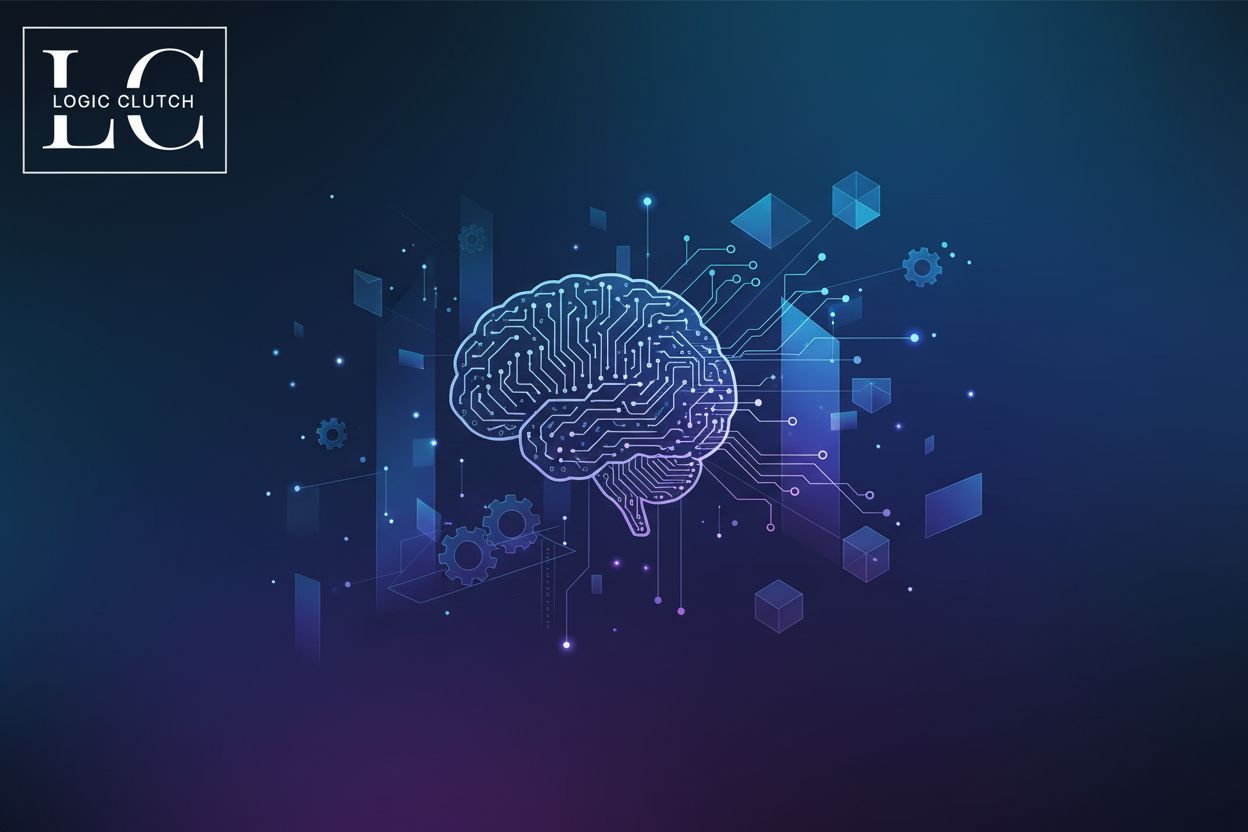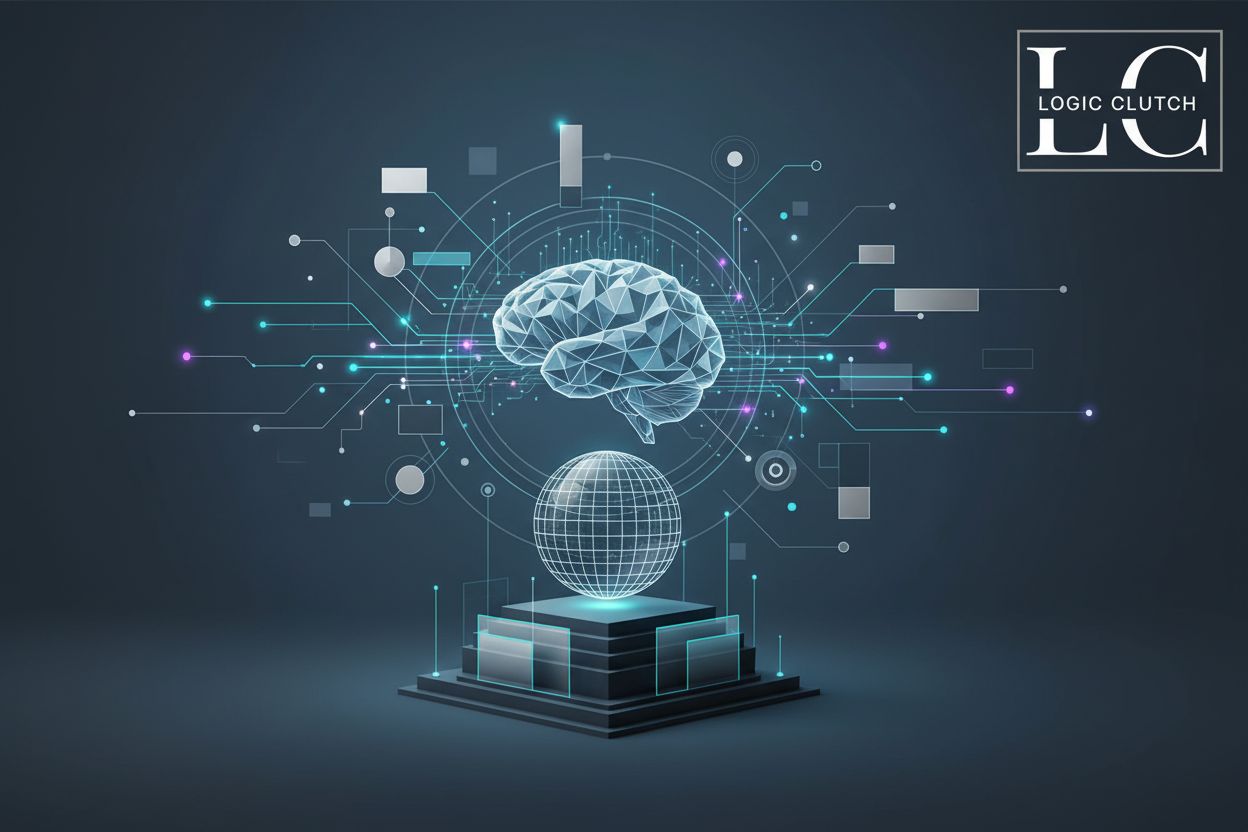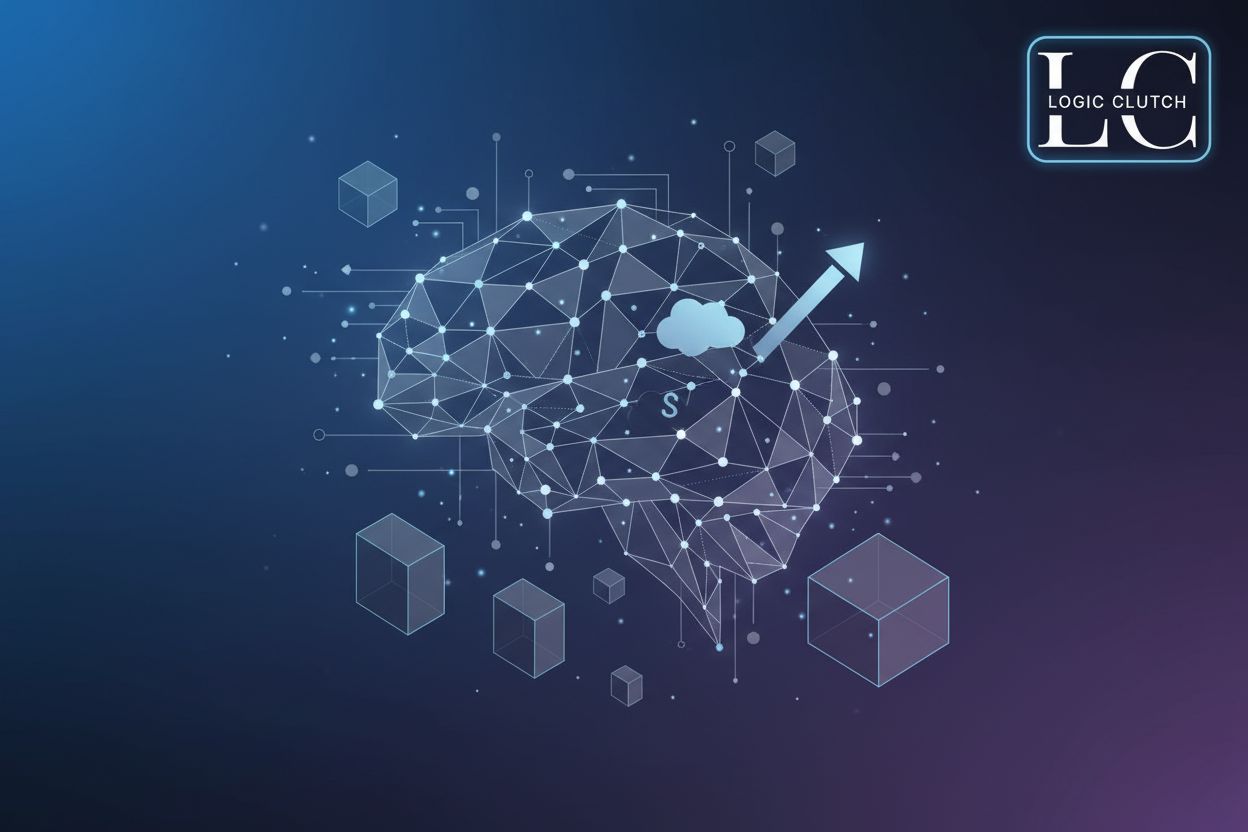AI for Large Enterprises: Exploring Benefits, Use Cases & Future Trends
TL;DR
Understanding AI's Role in Large Enterprises
Here's the deal: large enterprises are practically swimming in data, but actually using that data? That's the tricky part. It's like having a library but no card catalog.
Enterprise ai is essentially ai that's built for the big leagues. We're talking about solutions designed for massive scale, rock-solid security, and plays well with all your existing systems. It's not just about cool tech, it's about aligning ai with real business goals like boosting revenue or cutting costs.
- scalability is key. Can it handle billions of transactions? (Why Scalability Is Key to Digital Transformation Scale Agile Solutions)
- security can't be an afterthought. Think compliance and protecting sensitive data. (Security Shouldn't Be an Afterthought — It Should Be the Foundation ...)
- integration is crucial. will it actually work with your current tech stack? (Does tech stack really matter that much? : r/webdev - Reddit)
Large companies have their own unique set of headaches. Data sprawls across different departments, decision-making gets bogged down in bureaucracy, and keeping up with the latest market trends feels like turning a cruise ship.
- Data complexity is a huge issue. "Organizations generate and collect massive amounts of data, so it becomes tough to analyze" as noted in AI for large enterprises: Benefits, use cases and trends. You need ai to cut through the noise.
- Making decisions across multiple departments or even globally can be a nightmare. ai can provide real-time data and scenario modeling to help stakeholders make smarter choices.
- Productivity bottlenecks are common, especially with repetitive tasks. ai-driven automation can streamline those processes and free up employees for more strategic work.
Don't just take my word for it, though. Now that we've set the stage, let's dive into some specific use cases and see how they actually play out in the real world.
Key Benefits and Impactful Use Cases of AI
Okay, so you're probably wondering how the heck ai is actually helping big companies, right? It's not just hype, I promise. We're talking real, tangible benefits that can seriously impact the bottom line.
Think of all the data a large enterprise collects – it's insane! But what good is it if its just sitting there? ai can sift through that mess and find trends, predict outcomes, and generally make sense of it all. For example, with predictive analytics, you can forecast demand for products, figure out which customers are about to jump ship (churn), and get a handle on future revenue.
ai-powered customer segmentation lets businesses categorize their customers more accurately, tailoring marketing efforts and improving customer satisfaction.
It's not just about marketing, though. root-cause analysis uses ai to find out why something is happening – like, why sales are down in a certain region, or why there's a sudden spike in product defects. And with llms (that's Large Language Models, by the way – think super-smart text generators), employees can ask questions about policies, procedures, or internal documents using natural language, which is way easier than digging through a million files.
Let’s be honest, nobody likes doing repetitive tasks. ai can take a load off everyone's plate by automating those boring processes. Intelligent chatbots, can handle a ton of customer inquiries 24/7, freeing up human agents for the trickier stuff. And ai-enhanced rpa can automate complex workflows, like invoice processing or data validation – stuff that used to take hours can now be done in minutes.
I've seen first hand how useful copilots can be. They can help employees draft emails, summarize meetings, and even generate code. It's like having a super-smart assistant that never gets tired.
Generative design uses ai to automatically create a bunch of design options based on specific criteria, like cost or performance. Engineers can then pick the best one, saving a ton of time and effort. In large enterprises, this means faster product development cycles and more innovative designs. Or, imagine creating a digital twin of a factory or product – you can run simulations to optimize performance before you even build anything in the real world, leading to significant cost savings and reduced risk.
While the benefits of AI are clear, it's crucial to acknowledge and prepare for the inherent risks and challenges involved in its adoption. Next up, we'll take a look at how AI impacts risk management, security, and some other core business functions.
AI's Impact on Risk Management, Security, and Core Business Functions
AI isn't just about boosting efficiency; it's fundamentally changing how enterprises manage risk and bolster security. Think of it as a powerful new lens through which to view and protect your business.
In risk management, AI can proactively identify potential threats before they escalate. For instance, AI algorithms can analyze vast datasets to detect anomalies in financial transactions that might indicate fraud, or predict equipment failures in manufacturing before they cause costly downtime. This moves risk management from a reactive stance to a predictive one.
When it comes to security, AI is a game-changer. It can sift through mountains of security logs to spot sophisticated cyberattack patterns that human analysts might miss. AI-powered threat intelligence platforms can predict emerging threats, and AI can automate responses to security incidents, minimizing damage. Furthermore, AI can enhance identity and access management by detecting unusual login patterns or unauthorized access attempts in real-time.
Beyond risk and security, AI is streamlining other core functions too. In customer service, as we've touched on, AI-powered chatbots and virtual assistants provide instant support, improving customer satisfaction and freeing up human agents. In operations, AI can optimize supply chains, predict inventory needs, and improve resource allocation. For human resources, AI can assist in talent acquisition by screening resumes and identifying the best candidates, and even help with employee retention by analyzing engagement data.
Essentially, AI is becoming an indispensable tool for making smarter, faster, and more secure decisions across the entire enterprise.
However, as we've seen, adopting AI isn't without its hurdles. Next up, we'll navigate the risks and challenges of AI adoption.
Navigating the Risks and Challenges of AI Adoption
Okay, so you're probably thinking ai is all sunshine and rainbows, right? Not quite. Adopting ai in a big company is like trying to dock a spaceship – tricky, and a whole lotta things can go wrong.
It's not all smooth sailing. Here's a few snags you'll probably hit:
- Data privacy and security is a BIG deal. You're handling sensitive info, so you gotta have rock-solid access controls. Think encryption, anonymization; the works. Otherwise, you're just asking for trouble.
- Bias and fairness is a sneaky one. ai models can accidentally pick up biases from the data they're trained on. If you ain't careful, you might end up with a system that discriminates. Gotta monitor those models for "drift" and make sure they're treating everyone fairly.
- Change management? Ugh, a headache. People don't always love change, especially when it involves ai. You need training, clear policies, and maybe even tweak some workflows. Otherwise, folks will just ignore the new system.
Then there's vendor lock-in, which's a pain, and integration complexity, which can get real messy, real fast. Plus, keeping up with regulations is like trying to hit a moving target.
Here's a quick checklist:
- Who owns the data, anyway? And is it any good?
- For the important stuff, make sure a human is always in the loop.
- Keep an eye on how those models are performing, and whether they're being fair.
- Test your security, and test it hard.
- Maybe get an ai ethics committee? Sounds fancy, but it can save you from a lot of trouble down the road.
The key is planning for this stuff before you dive in headfirst. Now, let's look at keeping the ai train on the rails.
Ensuring Sustainable AI Through Governance
Alright, so, governance might sound like a total buzzkill, but trust me, it's what keeps your ai projects from going completely off the rails. Think of it as the adult supervision your algorithms desperately need.
- You need clear ownership of your data and models. Who's in charge when things go sideways?
- Policies are crucial. Think about privacy, consent, and how your models get used. No one wants a rogue ai.
- gotta have repeatable processes for approving and monitoring those models. It ain't set it and forget it.
- And transparency? Non-negotiable. Regulators and stakeholders need to know what's up.
It's not always fun, but it's what separates the ai pros from the ai amateurs. This focus on governance is essential for long-term success and responsible AI deployment.
Future Trends Shaping Enterprise AI
Okay, buckle up, because the future of enterprise ai? It's not just about fancier algorithms, it's about a fundamental shift in how big companies operate. Think less "shiny new toy" and more "nervous system upgrade."
- llms are moving into the enterprise stack: forget just chatbots, we're talking copilots that can draft emails, summarize meetings, and even generate code. They're becoming essential for boosting employee's productivity and customer experience.
- Rag is becoming more popular than fine-tuning: why? data privacy. No one wants their sensitive info accidentally leaking, so RAG (Retrieval-Augmented Generation) is the way to go. This way, your proprietary data stays safe. RAG essentially combines the power of large language models with external knowledge bases, allowing them to access and use up-to-date, specific information without needing to be retrained on it.
- ai governance and observability will be non-negotiable: this isn't optional anymore, folks. You need model registries, clear policies, and audit trails to keep things ethical and compliant.
Think about healthcare: imagine edge ai + iot devices giving real-time insights on patient's vital signs. Or, in retail, multimodal ai fusing images from security cameras with text from customer reviews. It can help prevent theft and improve customer satisfaction.
These trends ain't just buzzwords, they're reshaping industries in real time. You're gonna see more and more companies embracing these technologies to stay ahead of the curve.
Next up? We'll look at how to actually implement these trends without losing your mind or your budget.
A Practical Roadmap for Implementing AI
Alright, so you're thinking about actually doing this ai thing at your company? Cool, but where do you even start? It's not like you can just sprinkle some ai dust and call it a day.
First things first, you gotta identify high-roi use cases. What's gonna give you the most bang for your buck? Think clear kpis and data that's actually, you know, available. Like, can you actually get to it? This is where you'd consider trends like demand forecasting or fraud detection, which often have clear ROI and are easier to implement.
Then, assess your data readiness. where's it all living? Is it even good data? Are there weird access issues? The quality of your ai will only ever be as good as the data you're feeding it.
Next, you need to design the architecture. A data platform is essential, and mlops (Machine Learning Operations – think of it as DevOps for AI) and llm stacks are kinda important too. You also need to make sure it all integrates with what you already have! This architecture needs to support the trends we discussed, like RAG, by providing the necessary infrastructure for data retrieval and model deployment.
Now, let's talk people. You need to build the right team and operating model. I'm talking a cross-functional squad, not just a bunch of tech folks in a silo. And don't forget governance-- gotta keep things on the rails. This is where you'd bake in the principles of AI governance and observability from the start, ensuring ethical development and deployment.
Oh and you should start with pocs, but make them production-ready. No, seriously. Little test projects are great, but you need to think about actually deploying them from the start.
Finally, you absolutely must measure and iterate. What's working? What's not? Are you actually seeing the impact you expected? Track it all, and constantly tweak things. This continuous improvement loop is key to sustainable AI.
A 2025 Bix-Tech article notes that one of the fastest high-roi use cases include demand forecasting, and fraud detection. This is because it's easy to get started and see value quickly.
And remember, this isn't a one-time thing. You gotta keep at it. This roadmap provides a framework, and by integrating governance as a continuous element throughout these steps, you ensure your AI initiatives are sustainable and aligned with your business objectives.





